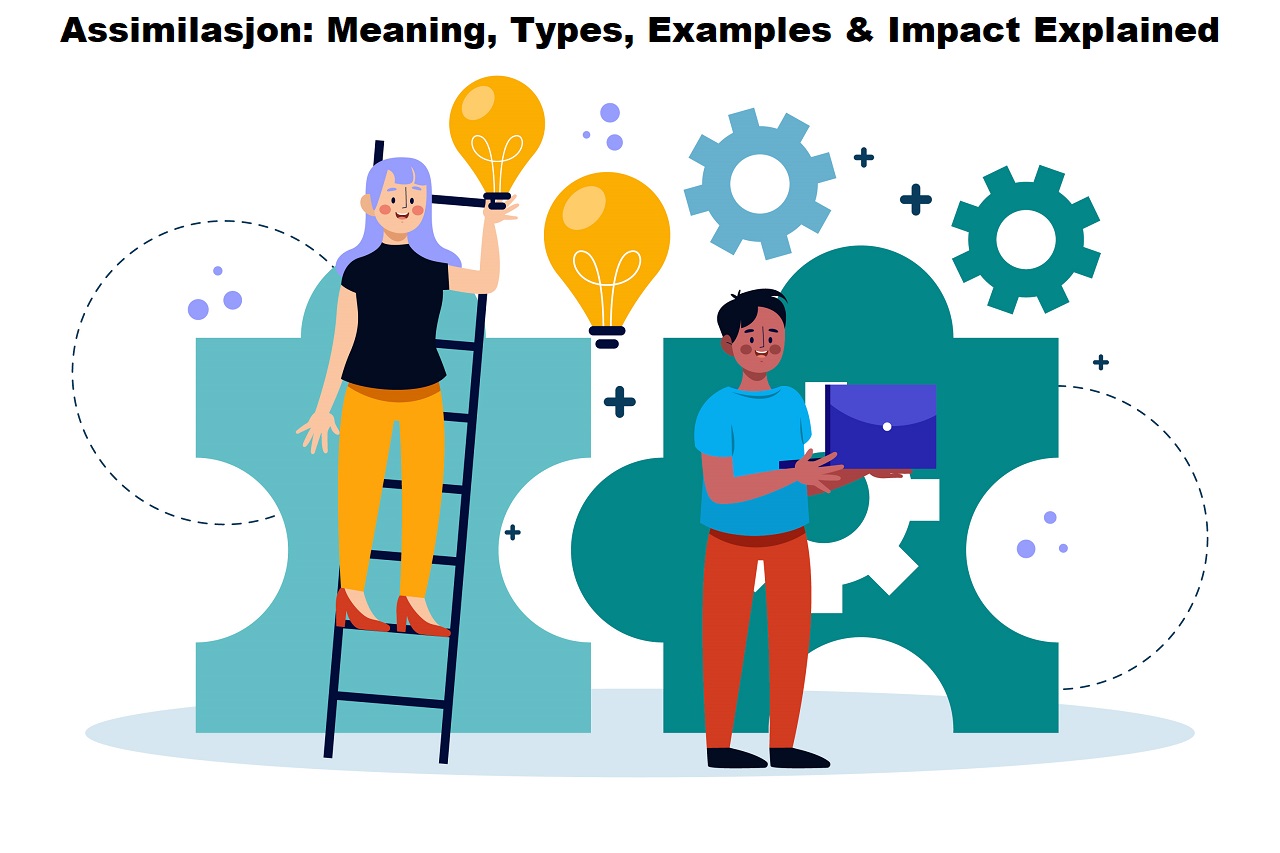What is Assimilasjon?
The word assimilasjon comes from the Latin assimilare, meaning to make similar.
In social sciences, assimilation refers to the process where one group gradually adopts the culture, language, or behavior of another, often dominant, group.
In simpler terms: assimilation is about blending in. For example, when immigrants move to a new country, they may adopt the local language, dress style, and customs to fit in with the majority culture.
Historical Background of Assimilasjon
Assimilation has been part of human history for centuries:
-
Ancient empires, like Rome, assimilated conquered peoples by teaching them Latin and Roman traditions.
-
Colonial powers imposed their culture, language, and religion on native populations.
-
Modern migration patterns continue to fuel debates around cultural assimilation and integration.
Types of Assimilasjon
Assimilation takes different forms depending on context.
1. Cultural Assimilation
When minority groups adopt the cultural traits of a dominant society.
👉 Example: Migrants adopting Western clothing or food habits.
2. Linguistic Assimilation
When people abandon their native language and switch to the dominant language.
👉 Example: Second-generation immigrants speaking English instead of their parents’ mother tongue.
3. Structural Assimilation
When minority groups gain access to social, political, and economic institutions.
👉 Example: Representation of minorities in government or universities.
4. Biological Assimilation (Amalgamation)
Intermarriage between groups, leading to shared heritage and mixed identities.
5. Psychological Assimilation
When individuals start to identify emotionally with the dominant culture.
Assimilasjon vs. Integrasjon
It’s important to distinguish between assimilation and integration:
| Assimilation | Integration |
|---|---|
| Minority group fully adopts dominant culture | Minority retains aspects of its culture |
| “Blending in” completely | “Coexisting” with diversity |
| Example: Native languages disappearing | Example: Multicultural societies like Canada |
Examples of Assimilasjon in the Real World
-
Native Americans in the USA – forced into boarding schools to learn English and abandon their traditions.
-
French Colonial Africa – locals were pushed to adopt French language and culture.
-
Modern Immigration – immigrants adapting to Western lifestyles while sometimes losing their heritage.
Positive Aspects of Assimilasjon
-
Easier communication (common language)
-
Access to education and job opportunities
-
Social acceptance and reduced discrimination
-
Shared national identity
Negative Aspects of Assimilasjon
-
Loss of cultural diversity
-
Suppression of minority traditions
-
Identity crises among younger generations
-
Social inequality when assimilation is forced
Assimilasjon in Language Studies
In linguistics, assimilation refers to how sounds change in speech.
👉 Example: In English, “input” often sounds like “imput” because the n changes to match the following p.
This shows that assimilation isn’t just cultural—it also exists in language and communication.
Modern Perspectives on Assimilasjon
Today, assimilation is viewed differently:
-
Some countries encourage full assimilation (e.g., France with strong emphasis on French language).
-
Others prefer multiculturalism (e.g., Canada, where multiple cultures are celebrated).
FAQs about Assimilasjon
Q1: What does assimilasjon mean in simple terms?
It means adapting to another culture and becoming similar to it.
Q2: Is assimilation always bad?
Not always. It can provide opportunities but may also erase cultural diversity.
Q3: What’s the difference between assimilation and acculturation?
-
Assimilation = minority fully adopts majority culture.
-
Acculturation = exchange of cultural traits between groups.
Q4: Can assimilation be voluntary?
Yes, people may choose to assimilate for jobs, education, or social acceptance.
Q5: Does assimilation still happen today?
Yes, especially in global migration and cultural globalization.
Conclusion
Assimilasjon plays a major role in shaping societies, languages, and identities. While it can open doors for social inclusion and opportunity, it can also threaten cultural diversity if forced.
The best path forward is finding balance—respecting diversity while fostering unity.

